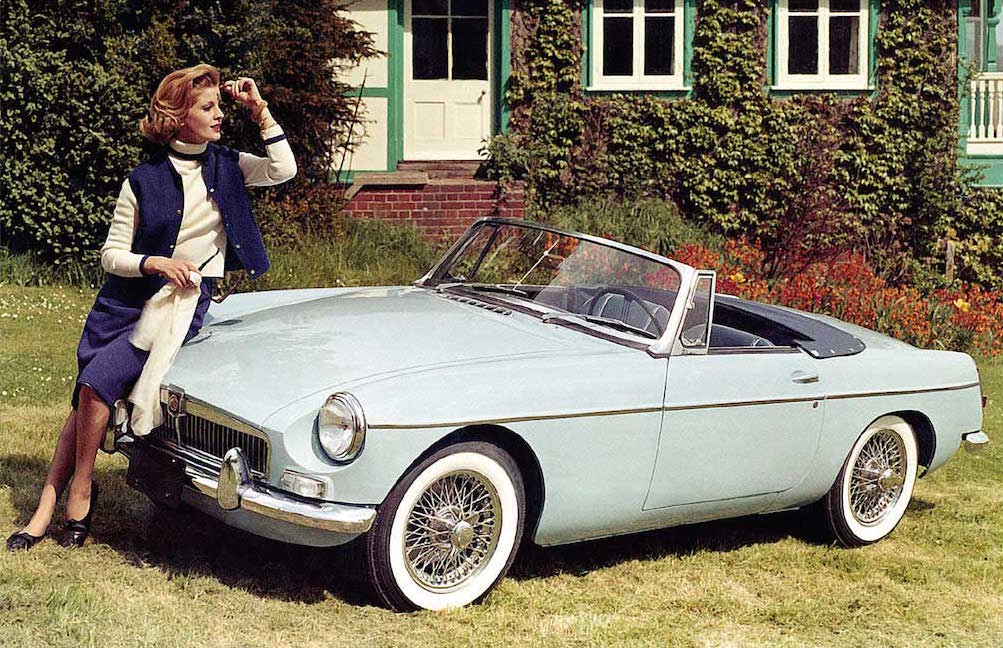

The Sixties fatigue is strong. We’ve watched and heard and read enough for a lifetime. Maybe two. And I get it. The politics were revolutionary, the possibilities seemingly endless, that the zeitgeist lends itself to drama. But, sweet lord, if someone mentions that record Hendrix and Miles almost cut one more time…
So I sighed. The Drive team was gathered, ostensibly to fill out an editorial lineup card, and veered off on a tangent. Which year contributed most to the automotive pantheon? Deliberation followed. Things got heated. Someone yelled. (Not unusual, but still). We agreed to take turns pleading our respective cases in the court of public opinion. And I knew which year to nominate. Resentfully, 1962 was the best year ever for cars. Here’s why.
Because Shelby Cobra.

It started at the Hollywood Inn. Carroll Shelby liked to go there, eat charbroiled steak sandwiches, have a martini or three. Talk racing. Mull things over. It was where he first heard that fellow tuner Ken Rudd planned on shoehorning six-cylinder engines into the lithe AC Ace sports car chassis. And so, in 1961, Shelby decided to do him one better.
Dave Evans, Ford’s stock-car racing boss, supplied a complete 260cid V8. Four-speed gearbox. Holley carburetor. Stout. Alongside the Hurlock brothers, who owned AC Cars, and the Hurlocks’ nephew, Shelby spent January of ’62 elbow-deep in an Ace roadster. After fiddling with the gearing, the group’s little prototype went out and did 150 mph. Turned and stopped, too. Ford signed a supplier’s agreement in February; by October, Shelby’s new Cobra was racing in America. Everything, the Daytona Coupe and GT40 and American wins at Le Mans and best Mustangs ever built, it all started here. Shelby liked to say the only worthwhile thing he’d ever done is bring people, and things, together. Hell of a man. Hell of a car.
Something for kings…

Jaguar showed the world its E-type, a 150 mph masterstroke, in 1961. It might as well have been the Moon Landing. The hierarchy, of speed and power and style, shifted. The Brits seemed ready to race, and Enzo Ferrari felt cornered. So he threw down the gauntlet.
In secret, using a 250 SWB chassis, he developed a new racecar. Tweaked. Prodded. Improved. Onto the rear went Watts linkage, between the fenders a monster V12. New body panels, too, hand-formed and scrutinized for aerodynamics. By the time the Ferrari 250 GTO was finished in March, Enzo had fired almost everybody from its original team. But, dammit if he didn’t get results: three-times FIA World Champion and, for now at least, the most expensive car ever sold at public auction.
… and something for everybody.

Five months later, the anti-Ferrari rolled out Morris Garage in Abingdon, England. They called it “the B.” Simple, unpretentious. Perfect for the ultimate Everyman roadster, something to feed the world’s insatiable sports car appetite. MG would build more than a half-million examples in the coming decades. Quantifiably, it’s the most successful sports car ever.
The MGB isn’t the sort of thing you analyze to a pulp. It is roadster table wine, four wheels and pseudo-Aston styling and 95 horsepower. You get in it, and you drive. Drive for as long as you can, grinning, before it breaks. Then you tinker, extinguish fires literal and/or metaphorical, and carry on. This cycle, and the B’s astonishingly ineffective canvas roof, has baptized more enthusiasts into the life than any other, including yours truly. I still smell like mildew.
Racing. Oh, the racing.

Peak motorsport? That’d probably be 1968, or maybe 1970. But the events, the alliances and revelations and personalities, it comes back here. And the talent. Ooof. The ’62 Formula 1 grid, abridged: Hill, McLaren, Surtees, Ginther, Gregory, Brabham, Bonnier, Stiffert. Some guy named Roger Penske started a few races, too. Oh, and Jim Clark, the greatest open-wheel driver ever, driving the car that revolutionized open-wheel racing, the Lotus 25.
Also: Offy engines, Dan Gurney in NASCAR, the inaugural Baja running, Suzuka groundbreaking, 50cc class at the Isle of Man. What more could you want?
So, there it is. Nineteen sixty-two. You got something better, Baime? Bring it.
